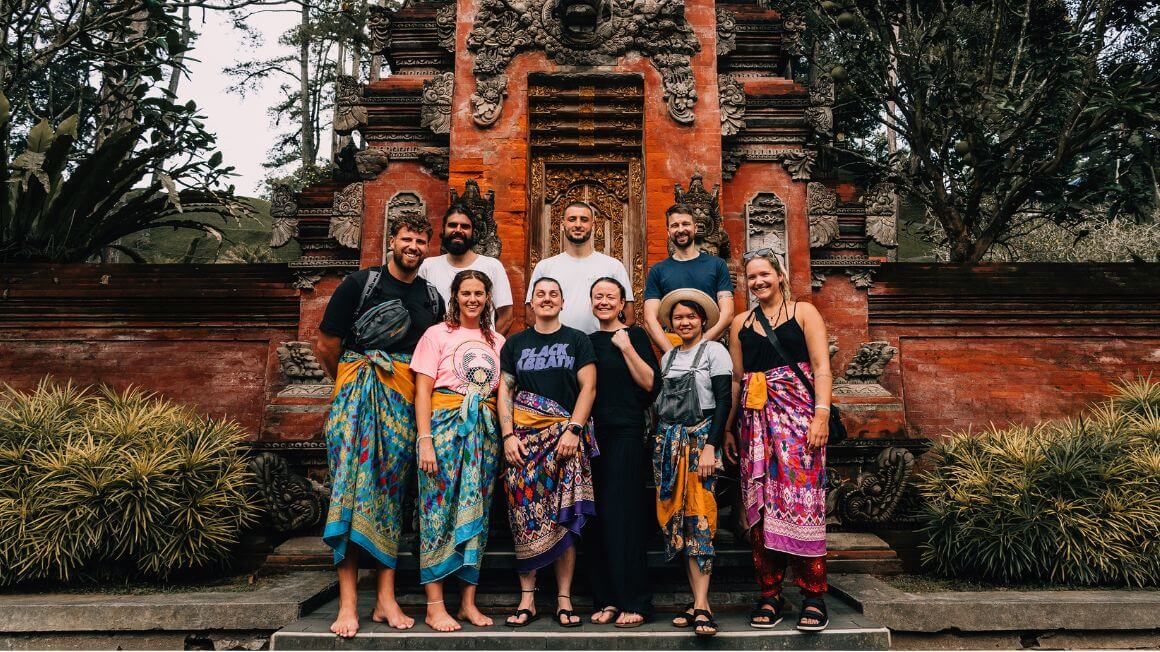The Broke Backpacker is supported by you. Clicking through our links may earn us a small affiliate commission, and that's what allows us to keep producing free content 🙂 Learn more.
Are you looking to tick of whale watching off your bucket list? Chances are you’ve got your eyes on Baja, Mexico. With calm, nutrient-rich waters in the Sea of Cortez, this stretch of coastline serves up some of the BEST marine life encounters on the planet.
But what really sets Baja apart isn’t just the sheer number of whales passing through — it’s how they behave. Ever since whaling was banned, there’s been this strange, unspoken truce between whales and humans here.
The grey whales haven’t just stuck around; they’ve started actively seeking out humans. Yep, these massive creatures will cruise right up to your panga for a good old-fashioned head rub. No one really knows why, but it’s become a signature Baja experience.
This is the only place on the planet where grey whales initiate contact like this. Hang around long enough and you’ll probably get a gentle nudge from one, like an ocean-sized puppy demanding attention.
And it’s not just greys—Baja’s also home to humpbacks, blues, orcas, and a whole buffet of marine life, all cruising through these waters.
This guide covers everything you need to know to make the most of whale season in Baja — from where to go, when to visit, and how to turn this into the kind of wild, unforgettable experience it ought to be.
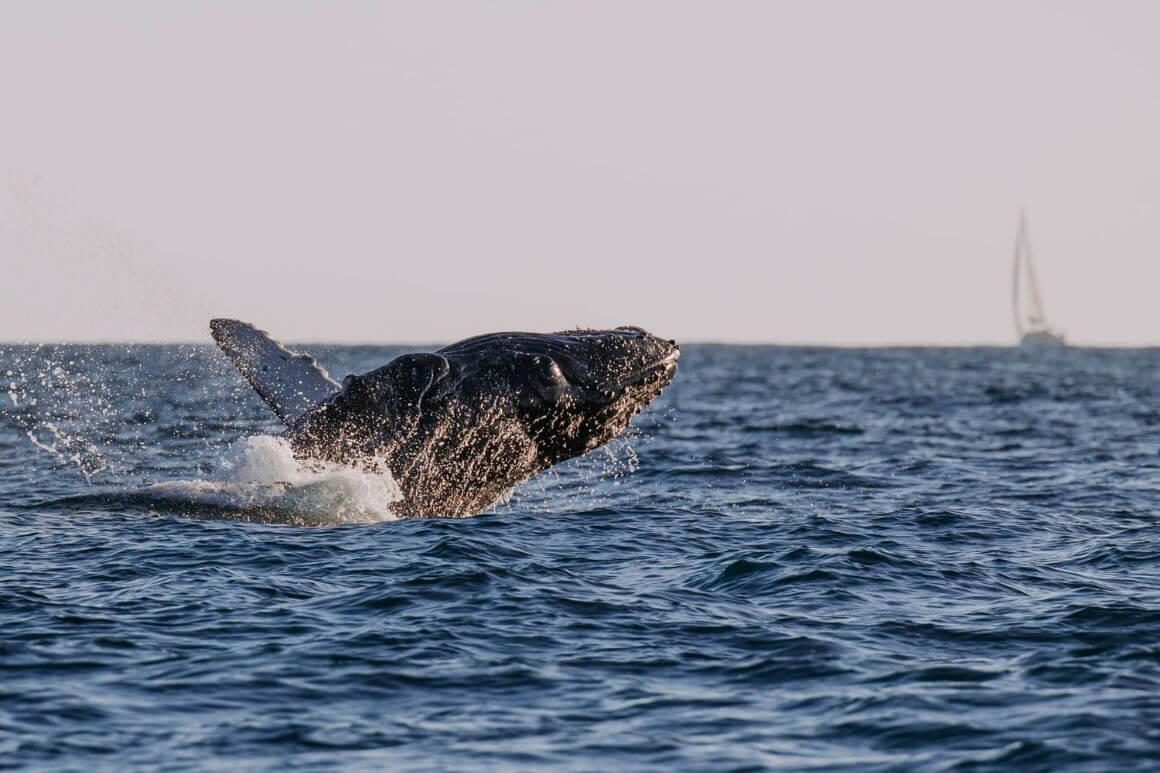
Photo: George Alvarez
The Broke Backpacker is supported by you. Clicking through our links may earn us a small affiliate commission, and that's what allows us to keep producing free content 🙂 Learn more.

Do You Want to Travel FOREVER??
Pop your email in below to get a FREE copy of ‘How to Travel the World on $10 a Day!’.
- About Whales in Baja, California
- What to Expect from Whale Watching in Baja California
- What Type of Whales Can You See in Baja, California?
- What Is the Best Season to Spot Whales in Baja?
- Where Is the Best Place to Whale Watch in Baja?
- Top tips for whale watching in Baja
- Where to Stay in Baja
- Weather in Baja
- What to Pack for Whale Watching in Baja
- FAQs About Whale Watching in Baja
- Final Thoughts About Whale Watching in Baja
- Buy Us a Coffee!
About Whales in Baja, California
Baja California is one of the world’s top whale-watching hotspots, with over eight species showing up along its coastlines each year. From gray whales migrating in their thousands to calve in the shallow Pacific lagoons, to blue whales, humpbacks, and orcas cruising the Sea of Cortez—Baja’s waters are full of giants from January to April.
Whether it’s friendly gray whales nudging pangas in San Ignacio or humpbacks breaching off La Paz, this stretch of Mexico delivers some of the most up-close, untamed whale encounters you’ll find anywhere. If you’re a real ocean lover, adding whale watching in Baja to your Mexico trip will feel like a pilgrimage you have to do at least once in your life.
Why Is Baja California the Best for Whale Watching?
There are a couple of different reasons. First of all, the Sea of Cortez is known for its nutrient-rich, calm waters, making it an absolute buffet for whales and other marine life. You can even see the famous mobula rays migration here, rocking up in their tens of thousands, all thanks to the perfect conditions to breed and feed.
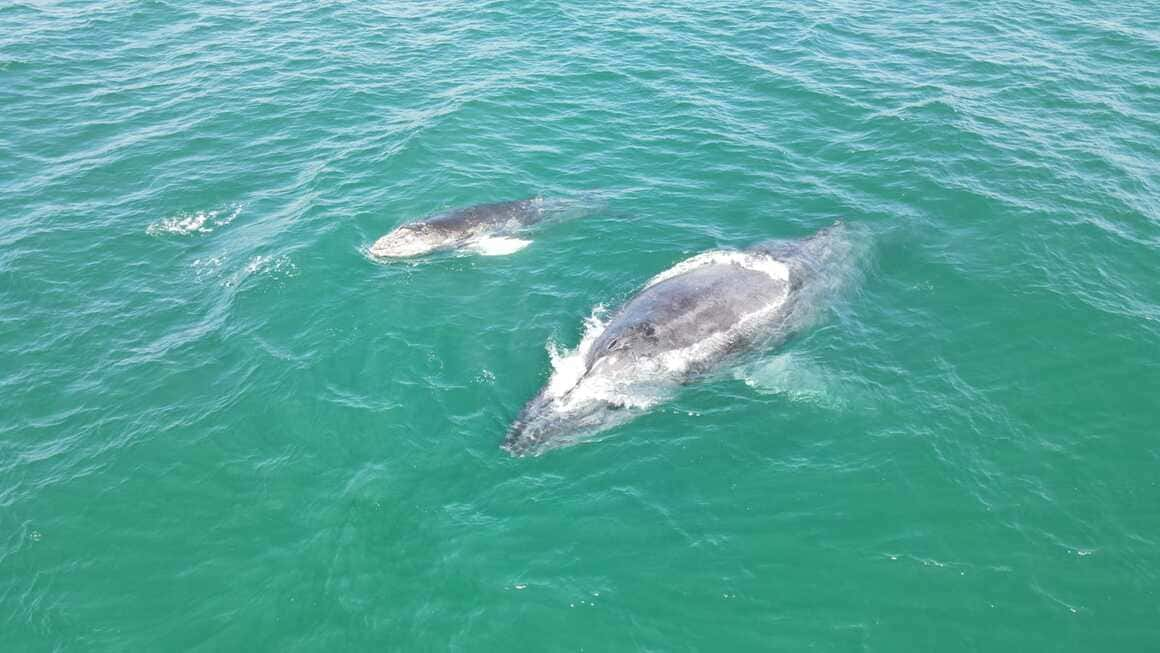
Photo: Audy Scala
Then there are the shallow, sheltered lagoons along the coast—safe from predators and perfect for mating, giving birth, and nursing their calves. After one of the longest migrations on the planet, this is where the whales finally slow down, rest up, and wait until their young are strong enough to head back toward the Arctic.
It’s one of the rare times you’ll catch these giants in a moment of calm, and that’s what makes seeing them here feel so special.
What to Expect from Whale Watching in Baja California
Whale watching in Baja California isn’t just about spotting a fin in the distance—it’s full-on, up-close encounters with some of the ocean’s biggest locals. In places like San Ignacio Lagoon and Magdalena Bay, gray whales are known to swim right up to the boats, sometimes even lifting their heads out of the water for a better look or letting you give them a gentle pat.
You’ll see mothers with calves cruising the calm, shallow waters, raising their infant calves before starting their long pilgrimage back to the Arctic. It’s a raw and wild oceanic experience that is surprisingly intimate.
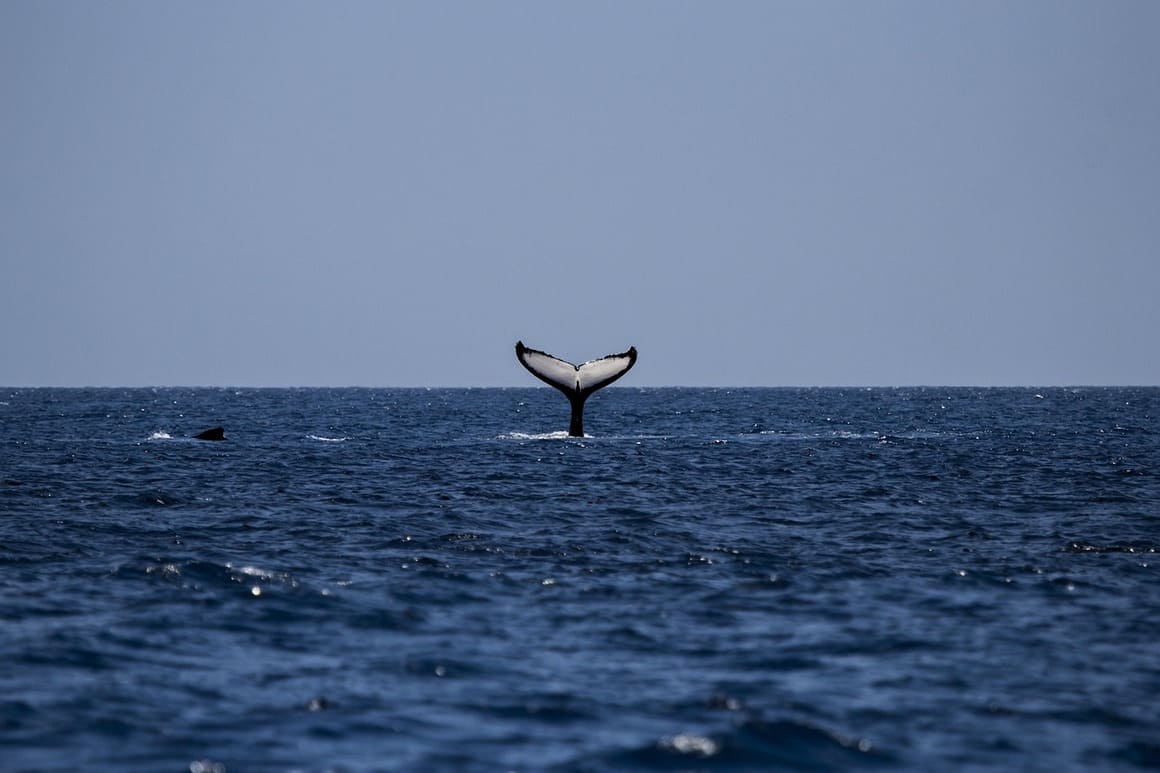
Between the spouts, tail slaps, and curious eye contact, you’re not just watching whales—you’re properly meeting them, and they seem just as interested in you as you are in them. Sure, you can see whales in other parts of the world, but there’s something about experiencing them in Baja that is pure magic.
Touching the Grey Whales – What’s That About?
Touching gray whales in Baja’s protected lagoons, like San Ignacio and Magdalena Bay, can be an incredibly moving experience, but it’s not without ethical considerations. What makes it unique, and arguably ethical, is that these interactions are entirely whale-initiated.
Unlike dolphin shows or captive encounters, the whales here choose to approach boats, often seeking out touch, especially mothers introducing their calves to humans for the first time. This behavior has been observed consistently for decades, particularly since commercial whaling ceased and these lagoons were protected by the Mexican government.
San Ignacio Lagoon became a UNESCO Biosphere Reserve in 1988, and since then, strict regulations have limited the number of boats, interaction time, and approach distance, ensuring the whales are never chased or coerced.
These encounters are led by local, community-run eco-tour operators who depend on conservation-focused tourism. This gives coastal communities economic incentives to protect whales rather than exploit them, making the practice not only ethical but part of a broader conservation success story. In 2020, over 300 gray whales were recorded in San Ignacio Lagoon during peak season, reflecting the species’ recovery since they were nearly hunted to extinction.
And while the tactile connection can be emotional, it’s worth remembering that awe, respect, and presence do not require physical contact. Watching them rise from the depths, make eye contact, and linger near the boat is often enough. The fact that these once-hunted animals now seek out peaceful contact with humans—on their terms—is, in itself, one of the most amazing wildlife interactions in the world.
What Type of Whales Can You See in Baja, California?
More than you’d think… Baja is the best place to stay in Mexico to see them all!
Gray Whales
The real stars of the show. These curious giants migrate all the way from Alaska to the lagoons of Baja to mate and give birth. They’re famously friendly—especially in places like Laguna San Ignacio, Magdalena Bay, and Guerrero Negro—and will often swim right up to boats for a pat or a scratch. No other whale behaves quite like this.
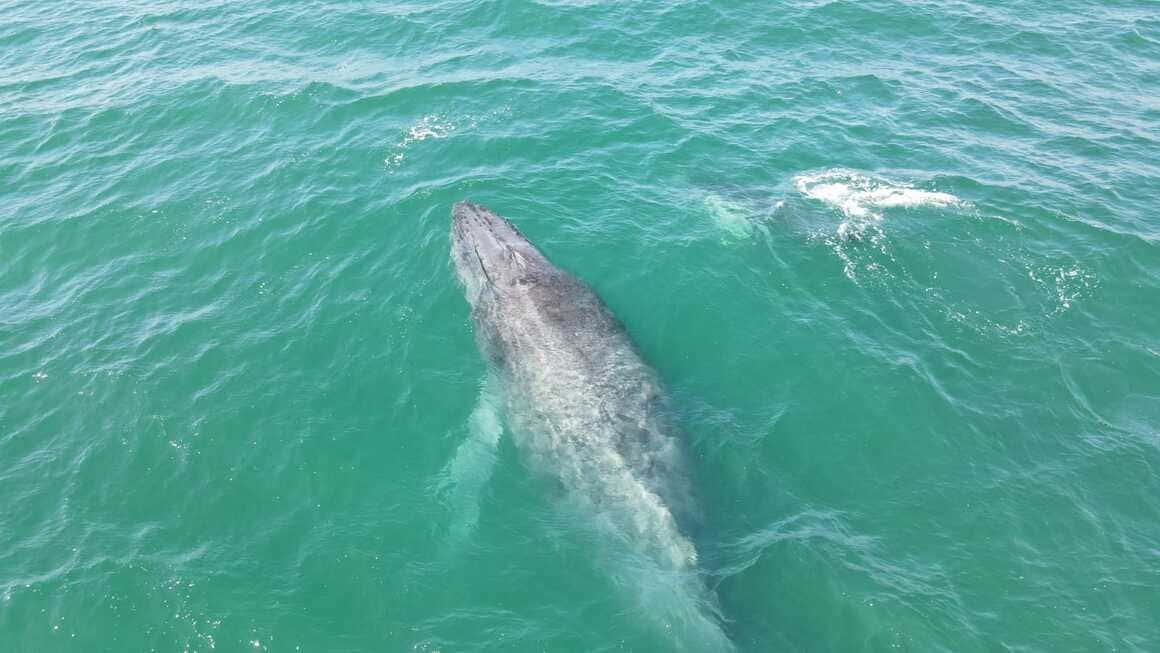
Photo: Audy Scala
Humpback Whales
Known for their acrobatics, humpbacks are all tail slaps, breaches, and dramatic water exits. You’ll spot them mostly around Cabo San Lucas, La Paz, and the Sea of Cortez from December to April.
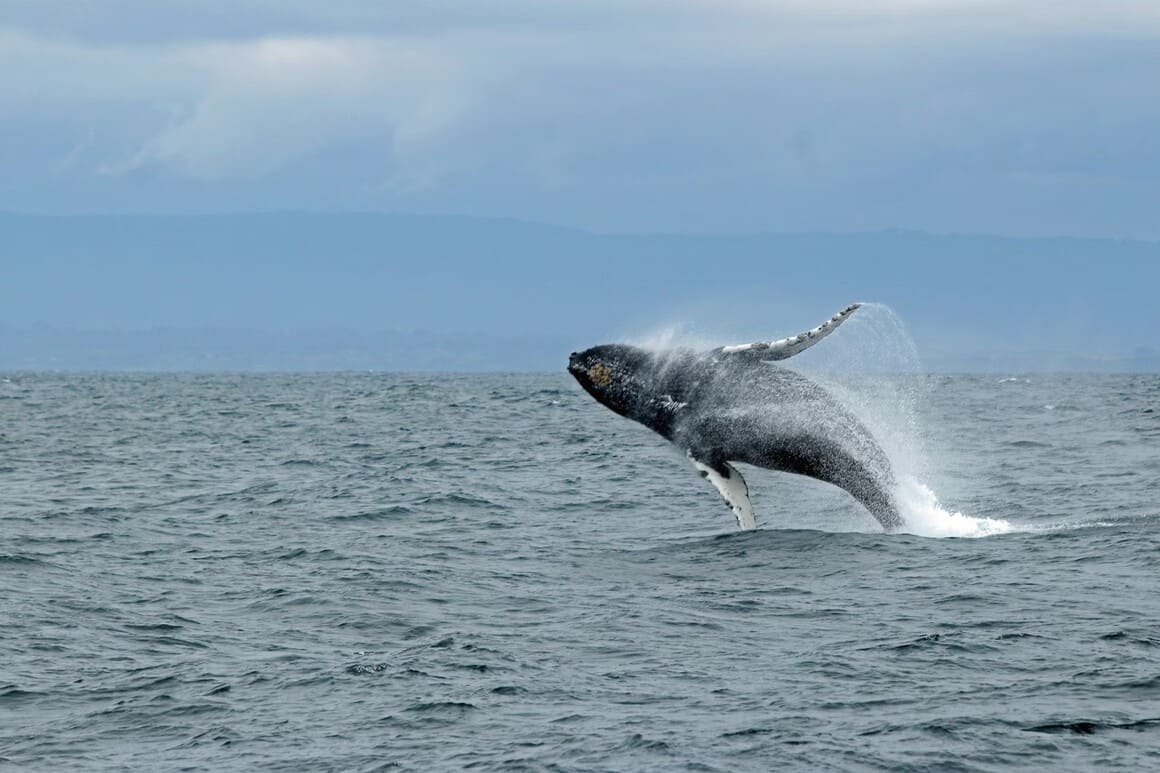
Blue Whales
The largest animal on Earth. They’re elusive, but sightings do happen—especially in the waters near Loreto in the Sea of Cortez, typically from February to April.
Sperm Whales
The deep divers. Sperm whales spend most of their time hundreds of metres below the surface, hunting squid in the inky darkness. But occasionally, they surface in Baja’s deeper offshore waters, particularly in the Sea of Cortez. They’re massive, wrinkly, and unmistakable thanks to their boxy heads and angled spouts. If you see one, count yourself seriously lucky.
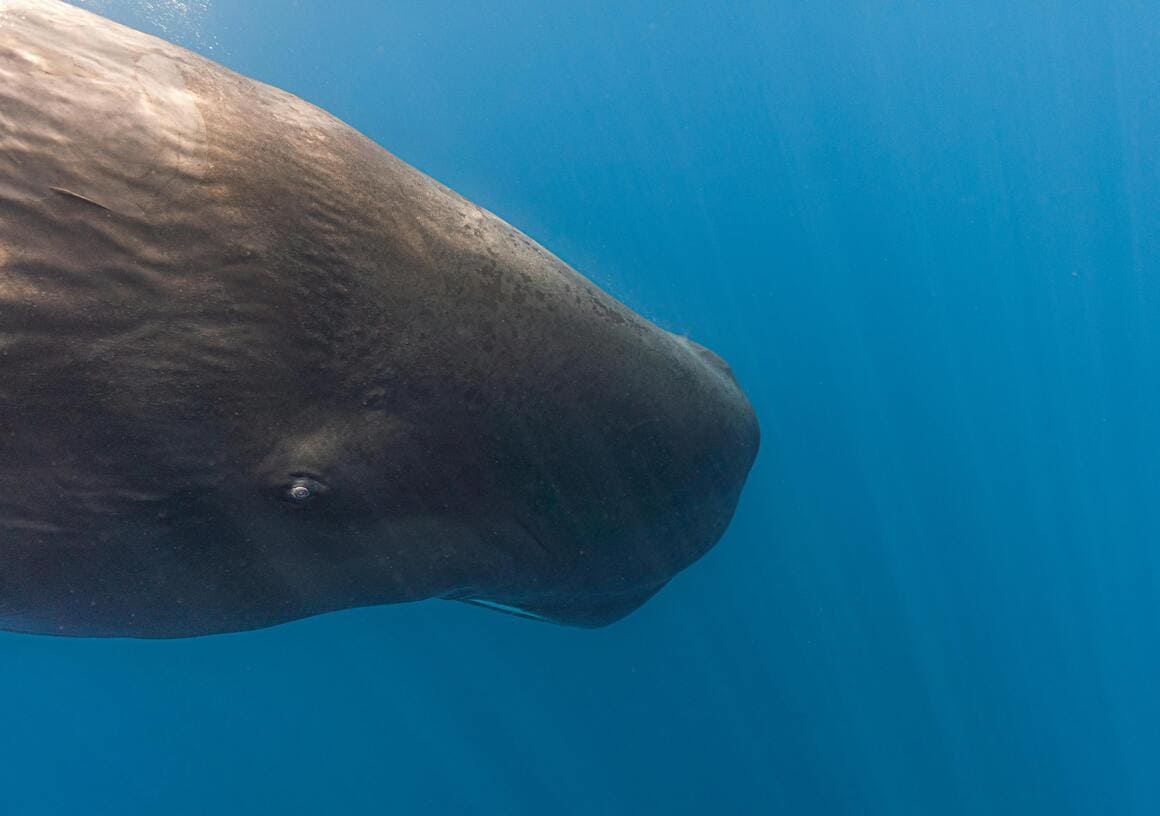
Bryde’s Whales
These guys stick around year-round, so if you’re visiting outside the main migration season, they might be your best bet. Smaller and less flashy than others, but still impressive.
Orcas
The apex predators of the sea, orcas (aka killer whales), occasionally roll through Baja’s waters, especially in the summer months. Why? Because that’s when the mobula rays migrate in the tens of thousands, and to an orca, that’s a snack buffet worth traveling for.
While not as commonly seen as gray or humpback whales, orca sightings do happen, particularly in the Sea of Cortez near La Ventana and Bahía de los Ángeles. These sleek, black-and-white hunters are fast, intelligent, and coordinated, often traveling in pods with complex social behaviour.
Spotting them feels like catching a glimpse of the ocean’s most elite squad—and it’s every bit as thrilling as it sounds.
What Is the Best Season to Spot Whales in Baja?
Luckily for adventure travellers who want to embark on a whale spotting pilgrimage, you won’t find it too difficult so long as you come in the right season, and conveniently, most types of whales frequent these waters at the same time of year.
From mid-January to early April, you’ll be able to spot gray, blue, humpback, fin, minke, and even sperm whales if you’re SUPER lucky. Although the number of gray sharks recorded is highest in mid-February, a lil’ tip is to aim to come in the latter half of the season, as you might even be able to see some baby whales by that time.
During these months, the whales are at their most relaxed and sociable. You’ll often see them cruising close to shore, breaching the water, or even nudging up for a scratch—especially in spots like San Ignacio Lagoon, Magdalena Bay, and Guerrero Negro.
Where Is the Best Place to Whale Watch in Baja?
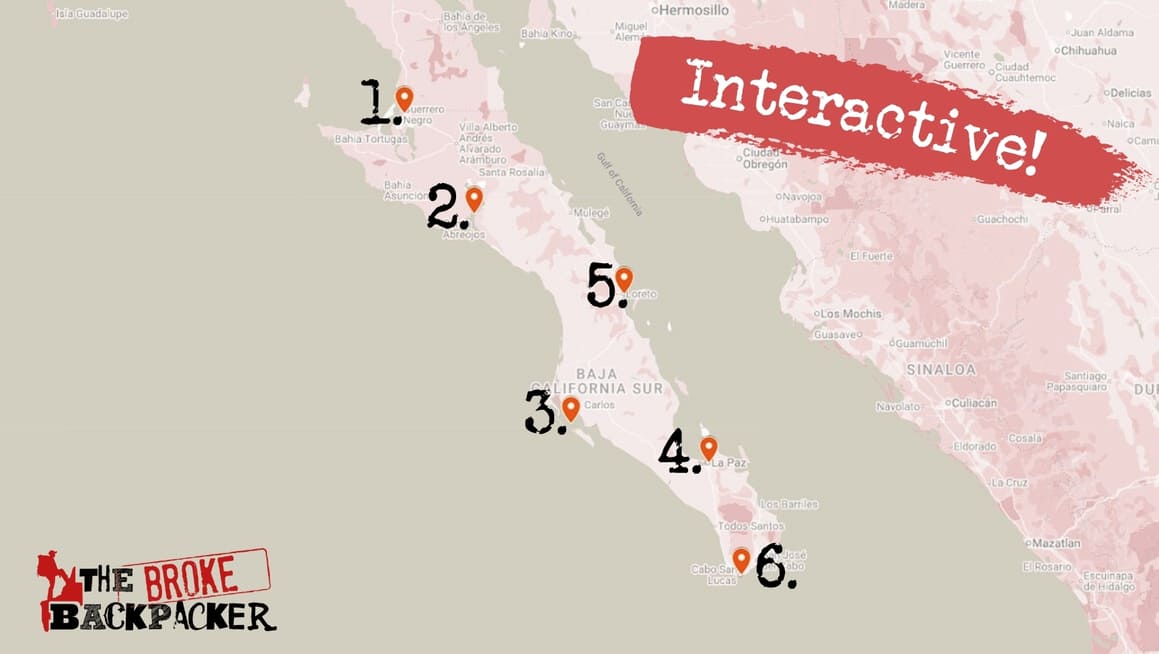
So you’ve rocked up to Baja and want to know the BEST place to have an encounter with a couple o’ whales. Luckily for you, Baja is crawling with places to spot them, and where you pick will depend on what type of whales you’d like to see.
If we’re talking the crème de la crème of encounters—Laguna San Ignacio and Laguna Ojo de Liebre (Guerrero Negro) on the Pacific side of Baja California Sur are unmatched, especially for gray whales.
Laguna Ojo de Liebre (Guerrero Negro)
This is without a doubt where you’ll find the HIGHEST concentration of gray whales in all of Baja. The warm, shallow, salty, and sheltered waters make it one of the largest breeding and calving grounds on the planet. In fact, around 95% of the world’s gray whales were born right here in Laguna Ojo de Liebre.
Commercial tour providers are not allowed to enter the lagoon; they are restricted to the mouth of the lagoon and the open ocean. Because of this, while friendly encounters do happen, they’re less predictable here, due to the sheer traffic of whales and boats alike.
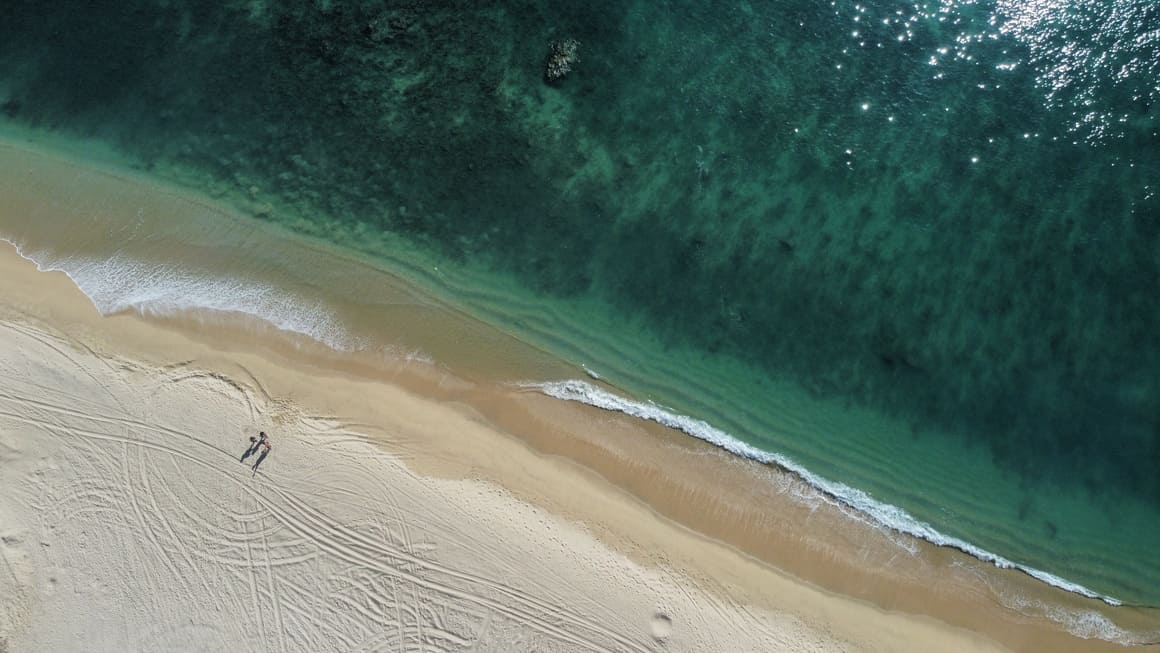
Photo: Audy Scala
Getting there is half the experience: you’ll drive across sprawling salt flats, which is a cool experience in its own right, before arriving at the park entrance, where you’ll book a trip with one of the local panga drivers. These aren’t random hires—the same captains return season after season, and the whales know them. Some whales will only approach a specific driver. Others will approach any boat. And a few, as always, aren’t interested in humans at all.
The lagoon itself is massive, and tourism is more developed than in San Ignacio, so expect more boats on the water and a bit less intimacy than in Laguna San Ignacio. Still, you’re in prime whale territory, and if you pick a tour that has links to good panga drivers, the encounters here can be nothing short of wild.
Laguna San Ignacio
If you’re looking for the famous ‘friendly whales,’ this is where you’ll find them. Here, calves and mothers come right up to the pangas to check out what’s going on. Touching them isn’t uncommon; they literally initiate it here.
Laguna San Ignacio is also known for its small-scale tourism and eco-camps, which means fewer boats, less noise and more trust.
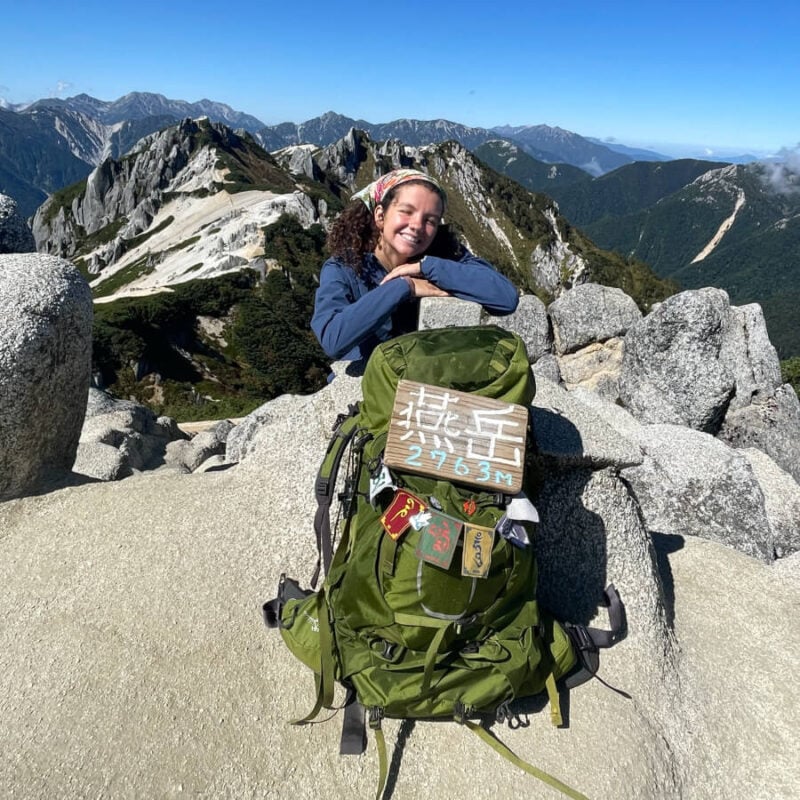
We’ve tested countless backpacks over the years, but there’s one that has always been the best and remains the best buy for adventurers: the broke backpacker-approved Osprey Aether and Ariel series.
Want more deetz on why these packs are so damn perfect? Then read our comprehensive review for the inside scoop!
View on OspreyMagdalena Bay
Magdalena Bay is the most accessible of Baja’s whale lagoons, sitting just three hours from the peninsula’s capital, La Paz, and about two and a half hours from the laid-back beach town of Loreto. It’s a wild slice of Pacific Baja—less polished than San Ignacio or Ojo de Liebre, but absolutely worth the detour.

Gray whales come here to breed and give birth, especially around Lopez Mateos and San Carlos. While close encounters do happen—usually with curious calves—it’s less about physical interaction and more about observing these giants in their natural rhythm. You might get a nudge or a spyhop near the boat, but most encounters here are a bit more hands-off, especially compared to the friendlier whales of San Ignacio.
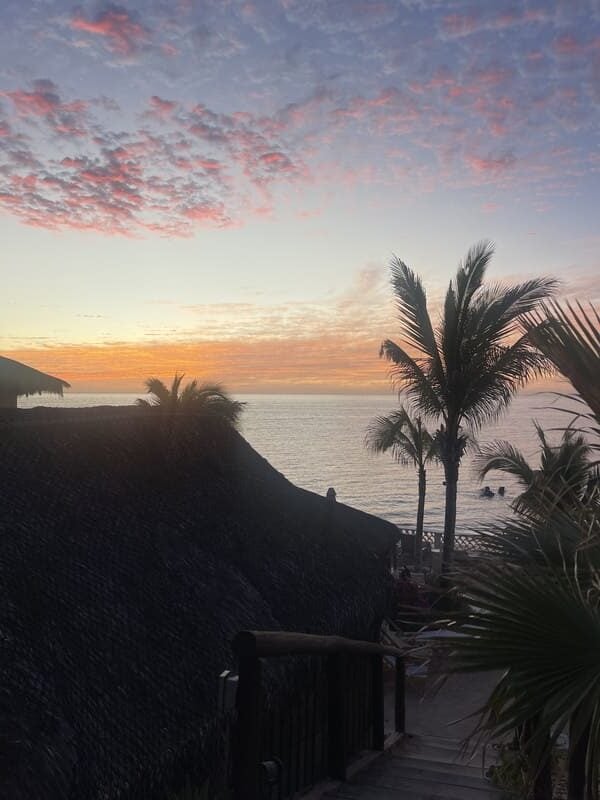
Photo: Audy Scala
La Paz & Loreto
La Paz is best known for its humpback whales, especially around January to March. It’s not the place for up-close interaction like you’d find with friendly gray whales in Laguna San Ignacio, but the scenery’s unreal and the whales are there if you’re lucky and patient.
Loreto, on the other hand, is aaaaaaaall about trying to spot the elusive blue whales. Despite being the biggest animal in the world, these fellas are deep divers, so spotting them on the surface is few and far between. Being in one of Mexico’s best national parks, however, considerably increases those chances. Come here between February and March, and you can often see up to a dozen blues in a day, along with fin whales, humpbacks, Bryde’s whales, and dolphins.
Cabo San Lucas
This is where the Sea of Cortez meets the Pacific, so you’ve got nutrient-rich waters, steep drop-offs close to shore, and a prime migration corridor running right past the bay. Humpback whales are the stars here—breaching, flipper-slapping, and tail-lobbing in a real display of theatrics.
It’s one of the wildest things to do in Cabo San Lucas during the season, especially when gray whales pass through, but they’re usually en route to the lagoons further north. You might also spot fin whales, Bryde’s whales, dolphins, and the occasional orca if you’re lucky. January to March is prime time, though the season runs from mid-December to April.
Top tips for whale watching in Baja
Want the most out of your whale watching tour? Here are some insider tips so you can soak up every second of magic!
1. Go Early in the Season (or Late) if You Want Fewer People
Mid-January to early February is prime for calm waters and curious whales, with fewer tourists than peak March.
2. Book a Panga, Not a Huge Tour
Skip the floating human buffet—small pangas get you closer to the action. PLUS, I know it’s hard to believe, but whales know the drivers and will return to their favorites year after year.
3. Dress Like It’s Winter—Because It Is
The sky may look bright, but the waters are BRISK. Layers, windbreakers, beanies, and gloves for those freezing morning rides. Don’t underestimate that sea wind.
4. Bring Dry Bags and Spare Socks
You will get wet. Dry feet = happy traveler. Dry snacks = happier traveler.
5. Choose the Right Spot for the Experience You Want
- Up-close & personal: San Ignacio
- Whale soup: Ojo de Liebre
- Off-the-grid feel: Magdalena Bay
- Big species variety: La Paz and Loreto
6. Don’t Expect a Whale Every Five Seconds
They’re wild animals, not performers. Patience pays off—and when it does, it’s pretty unforgettable.
7. Support Operators Who Respect the Whales
Go with licensed guides who follow rules, limit boat numbers, and know when to back off. The whales know who to trust. When it’s all about the animals, picking ethical animal tourism should always be the priority.
8. Leave the Drone at Home
Banned in most reserves and lagoons—and it ruins the vibe for everyone, whales included.
Where to Stay in Baja
Figuring out where to stay in Baja? Maybe you want an authentic lil Mexican casita? Or a bougie eco resort to unwind after a day on the water? Here are a couple of my favorite digs in the area, no matter what type of traveler you are.
Susu’Z Village Hostel and Rooms | Best Hostel in Baja
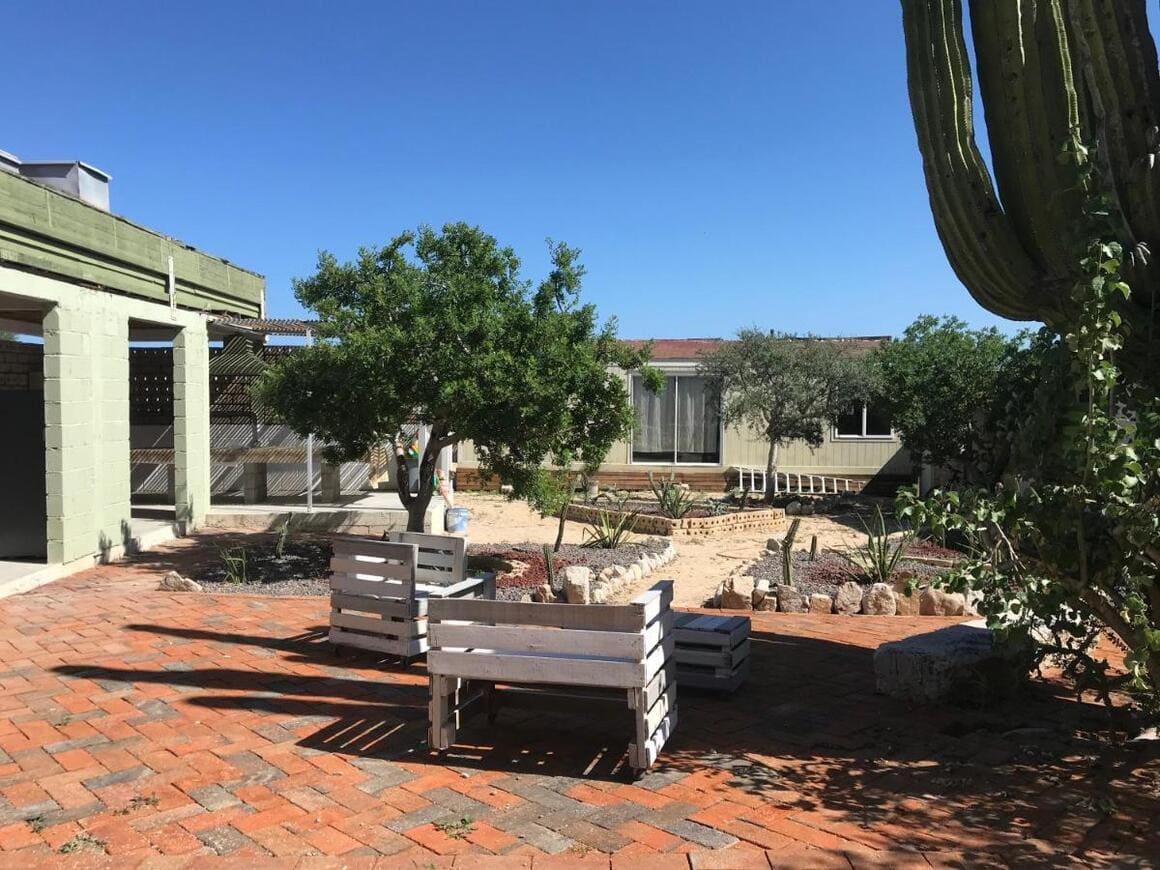
Hostels weren’t a thing when I was first in Baja, and let me tell you, it is a VERY welcome addition. Finally, a budget option for backpackers in La Ventana, this hostel has a super chill vibe with great community spaces. The owners are legends and have thought of everything you need for a comfortable stay. Who said you can’t do Baja on a budget? If you’re solo travelling in Mexico, this is the spot.
The Baja Station | Most Unique Stay in Baja
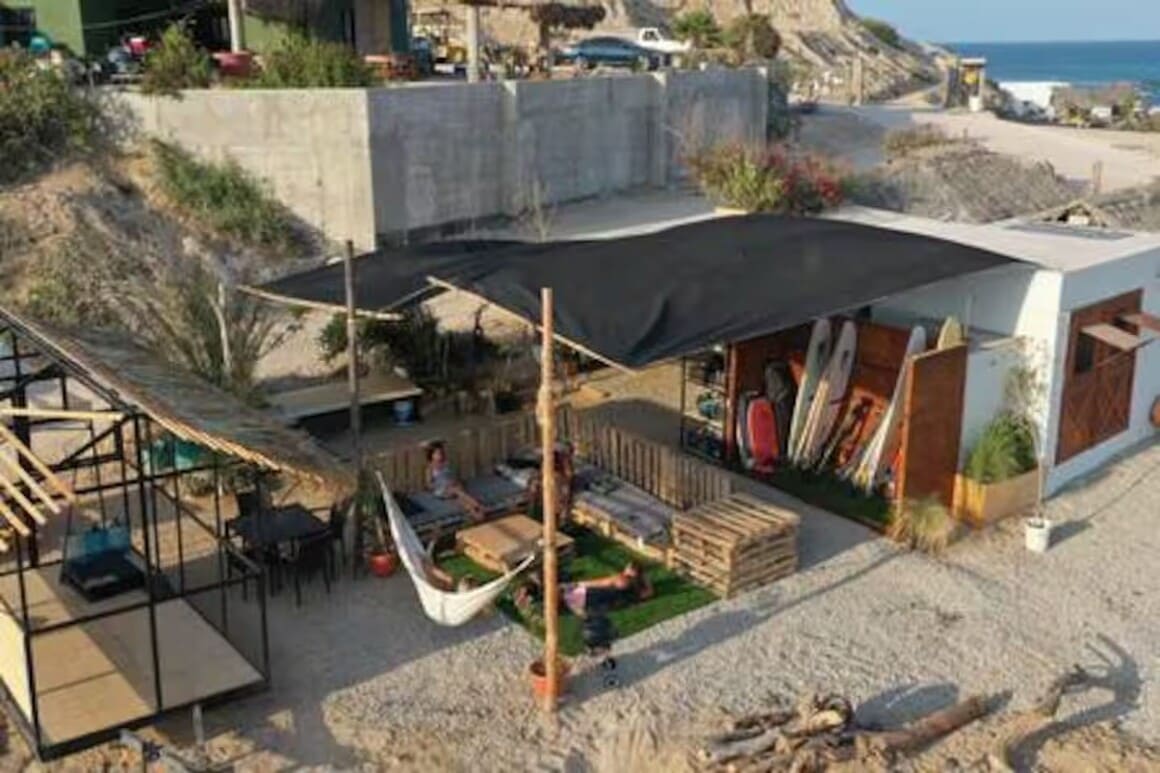
The Baja Station is a stripped-back, off-grid hideout built for travelers, surfers, and creatives who like their stays with a bit of soul. Tucked away in La Fortuna, The Ranch House is your rustic beachside base—equal parts boho, barefoot, and warm vibes. It is a hand-built community living space, with open mic nights, a music studio, a sailboat and surfboards. When you arrive here, you’ll feel right at home…
Punta Pescadero Paradise Hotel & Villas | Best Resort in Baja
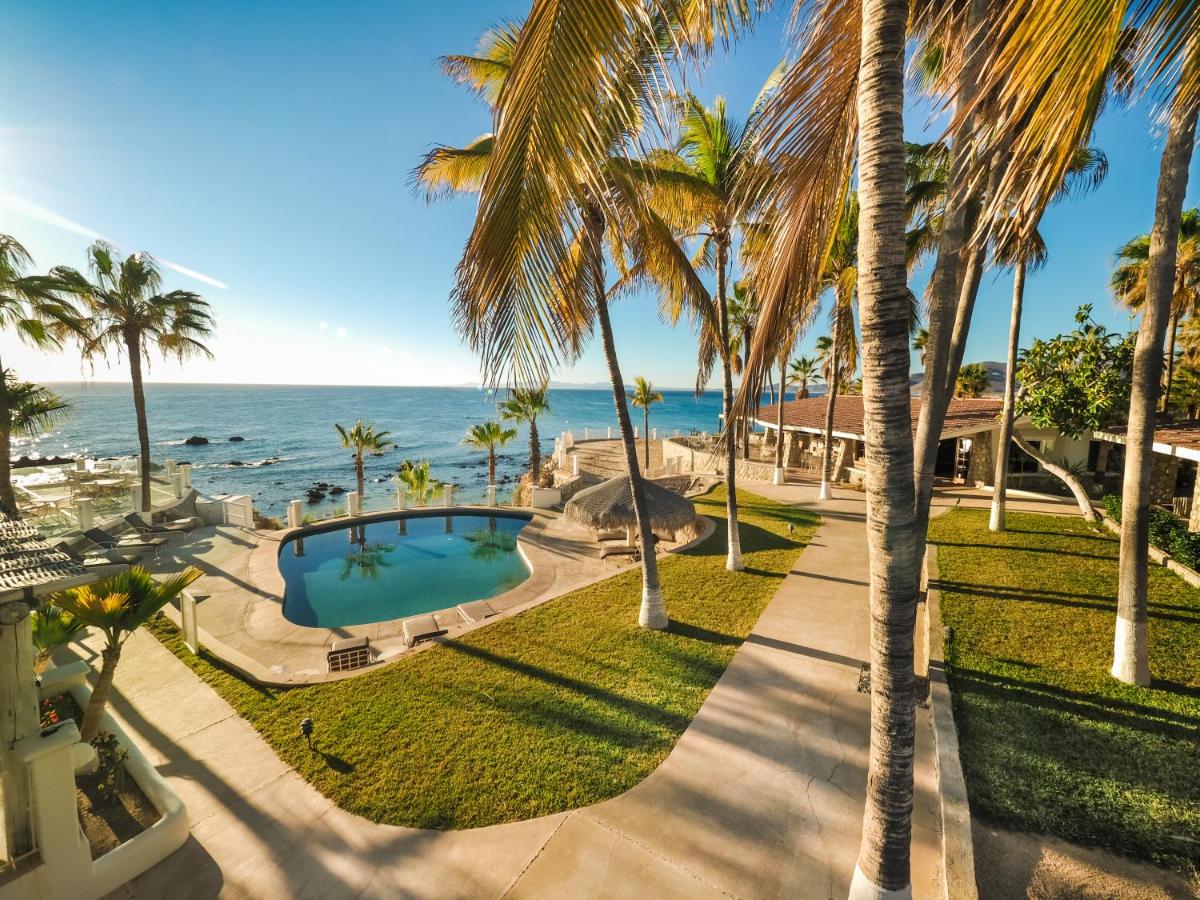
If you’re happy to spend a bit more, this spot in Los Barriles is well worth the splurge. You’ll get sweeping ocean views, free kayaks and SUPs on the beach, proper loungers with shade, and huge clean rooms with coffee, water, and all the basics sorted. If luck’s on your side, you might even catch mobulas breaching offshore or whales gliding past while you’re sipping your morning coffee. You’re basically sleeping on the shoreline—short of pitching a tent in the surf, you won’t get closer.
ChiloChill Glamping Resort | Best Glamping in Baja
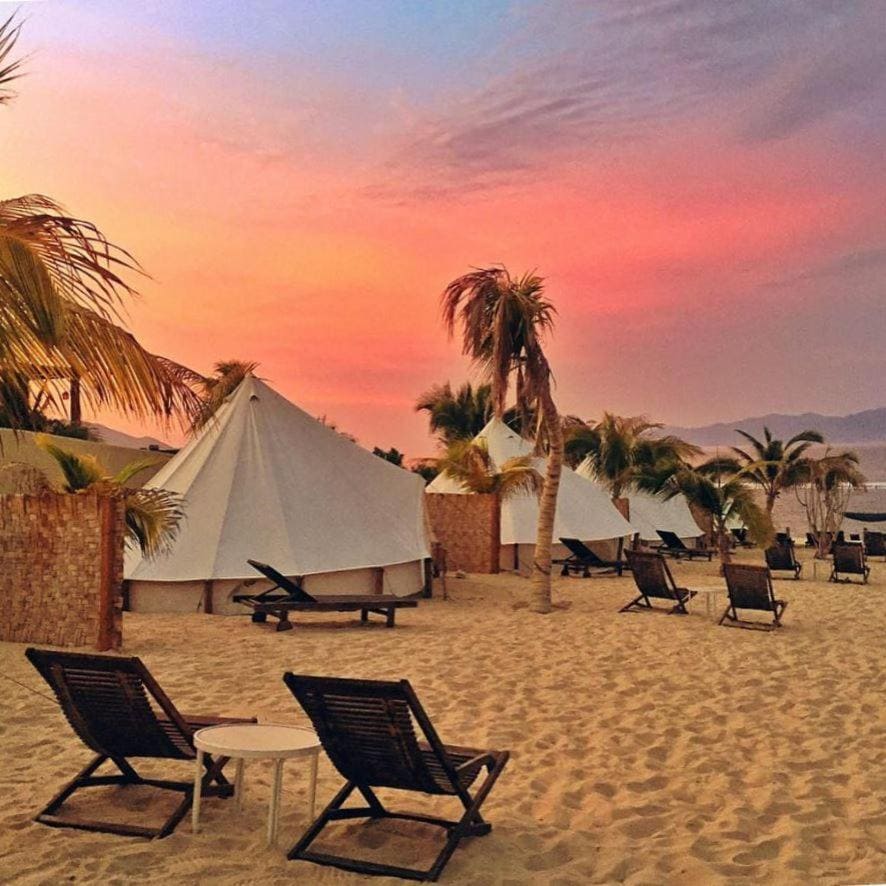
If you’re after nothing but sand, sea, and space to breathe, this glamping spot in La Ventana hits the mark. It has all the luxuries of glamping PLUS you don’t have to worry about forgetting the tent poles. You’re pitched right on a stunning Mexican beach, so the ocean’s your front yard and the mountains are your backdrop. Sunrises hit different out here, and the whole setup’s got that laid-back, off-grid charm that makes it hard to leave.
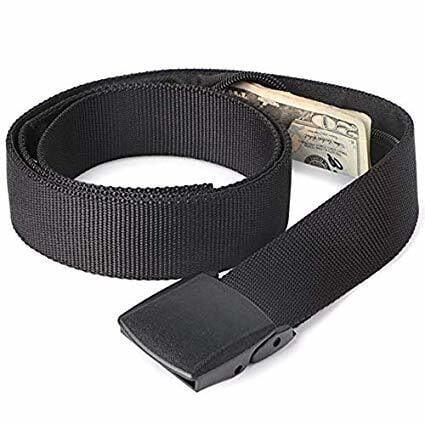
Stash your cash safely with this money belt. It will keep your valuables safely concealed, no matter where you go.
It looks exactly like a normal belt except for a SECRET interior pocket perfectly designed to hide a wad of cash, a passport photocopy or anything else you may wish to hide. Never get caught with your pants down again! (Unless you want to…)
Hide Yo’ Money!Weather in Baja
So prime time for whale watching in Baja is January to April as we know. This time is late winter to early spring in Baja, but don’t let that put you off. It’s Baja’s version of winter, which is a lot milder (and sunnier) than what most of North America and Europe are used to. If you’re escaping a Northern Hemisphere winter, Baja might just serve up some of the best weather you’ll get all year.
Rain is rare this time of year and you can expect sunny, bright days. But don’t be fooled by all that sunshine. It’s a mixed bag of cold mornings, strong sun and coastal wind. Of course, you gotta factor in that wind + the dessert = its own surprises.

Photo: Audy Scala
It’s safe to say that the wind definitely rules the roost here, so pockets of Baja all have wildly diff feeling temps depending on where you are and how the wind is. Especially when you’re out on the water for hours at a time with little wind protection, it can feel cold reallll quick.
BUT the combination of crisp, dry air and bright sun makes for perfect conditions that photographers love for crisp shots, especially for early morning whale spotting seshes.
That’s not to say that once you’re satiated with seeing your oceanic friends in the morning, you can top up your tan and pretend it’s the Med as temperatures can still reach into the 80s°F.
What to Pack for Whale Watching in Baja
So as I’ve already said you kinda have to pack for all seasons during this whale watching season in Baja. But what does that entail? Don’t worry, I’ve got a comprehensive breakdown of all the things you shouldn’t forget on your packing list for Baja.
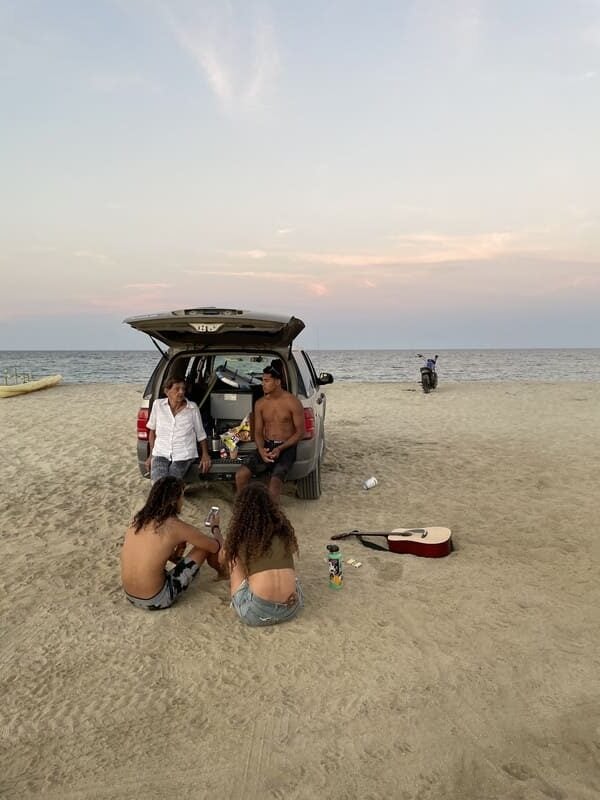
- Layers: fleece, thermals, windbreaker, long sleeves.
- Sun protection: sunglasses, sunscreen, hat (with a chin strap—trust me).
- Quick-dry trousers or leggings: Avoid denim. If you get wet, you’ll want to dry fast.
- Sea sickness meds if you’re sensitive—the chop can sneak up on you, especially on longer open-water tours.
- Polarised sunglasses: Essential for cutting glare and actually seeing the whales beneath the surface. My Oakleys are my ride or die for this kind of thing.
- Camera with zoom lens: GoPro for splash-proof footage, zoom lens for detail—just don’t expect National Geographic results from a bouncing panga.
- Waterproof dry bag: Keep cameras, phones, passports, and snacks dry. This one is my fave.
- Binoculars: Optional but amazing for scanning distant blows or spotting dolphins en route.
- Notebook or journal: If you’re the type to record sightings and field notes like a wildlife nerd.
You’re dealing with sun, wind, cold mornings, salt spray, and unpredictable conditions—so pack smart or suffer salty, shivering regrets.
Getting Insured BEFORE Heading to Baja
You don’t want to be caught out in the ocean without some solid Mexico travel insurance!
ALWAYS sort out your backpacker insurance before your trip. There’s plenty to choose from in that department, but a good place to start is Safety Wing.
They offer month-to-month payments, no lock-in contracts, and require absolutely no itineraries: that’s the exact kind of insurance long-term travellers and digital nomads need.
SafetyWing is cheap, easy, and admin-free: just sign up lickety-split so you can get back to it!
Click the button below to learn more about SafetyWing’s setup or read our insider review for the full tasty scoop.
FAQs About Whale Watching in Baja
Still got Qs? No stress! This is what I get asked most by travelers with their sights set (literally) on spotting whales in Baja!
Final Thoughts About Whale Watching in Baja
Watching these mysterious creatures in Baja will surely be one of the most intimate experiences you’ll have in the ocean. Truly mesmerising, these creatures will lure you in and take your heart. And I have no complaints with that.
Staring into the eye of a friendly gray is one of the most surreal connections you can make with the ocean world. From mammal to mammal, it is such a stark reminder that we all live on the same Earth and how important it is to protect and cherish it.
I hope this guide allows you to squeeze the most magic out of this experience and arm you with some tips along the way. Baja’s a wild, unforgettable corner of the world—make sure you take advantage of all of the things you can do here, both below the surface and back on dry land.
Enjoy it, amigos—and if you end up face-to-face with a gray, give ‘em a little nod from me.
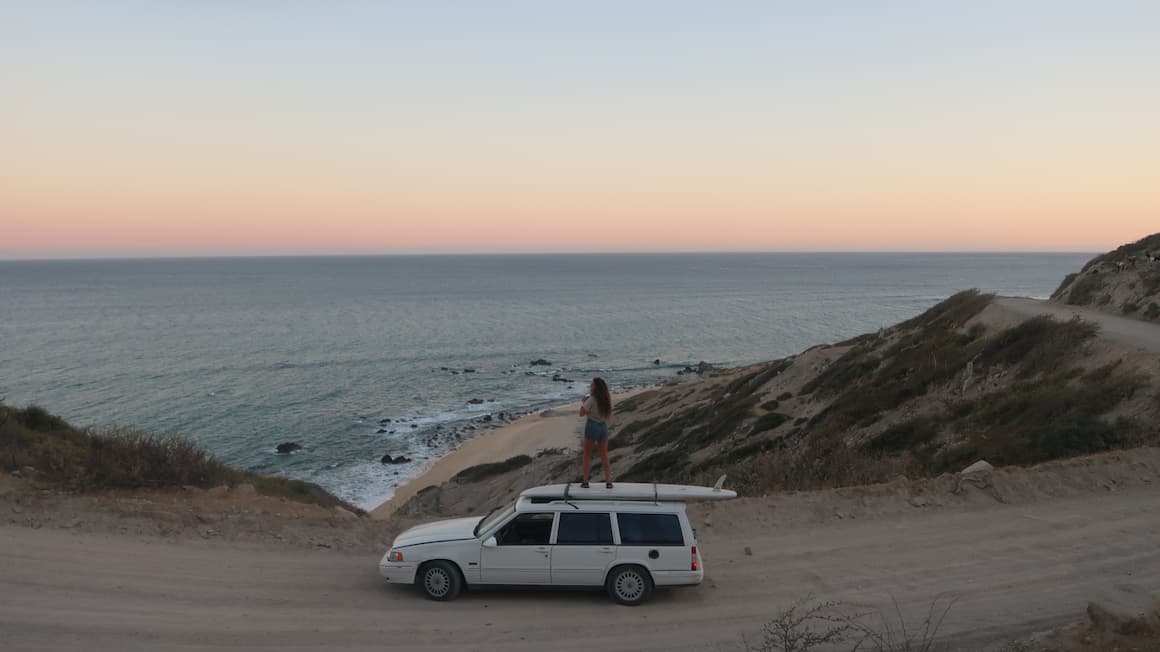
Photo: @amandaadraper
Buy Us a Coffee!
A couple of you lovely readers suggested we set up a tip jar for direct support as an alternative to booking through our links, since we’ve decided to keep the site ad-free. So here it is!
You can now buy The Broke Backpacker a coffee. If you like and use our content to plan your trips, it’s a much appreciated way to show appreciation 🙂



